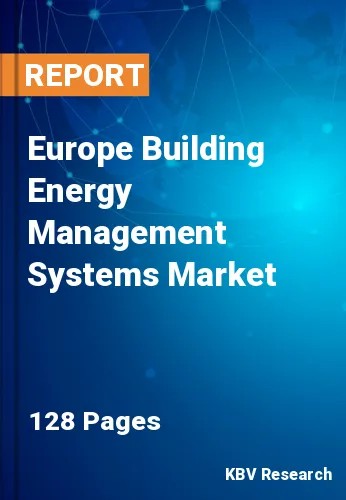The Europe Building Energy Management Systems Market would witness market growth of 10.9% CAGR during the forecast period (2023-2030).
BEMS utilizes predictive maintenance algorithms to monitor the health and performance of building systems and equipment. BEMS can predict potential equipment failures or inefficiencies by analyzing sensor data and historical patterns. This proactive approach enables facility managers to schedule maintenance activities before issues escalate, minimizing downtime and extending the lifespan of equipment. BEMS incorporates occupancy sensors to track the presence of people within a building or specific zones. This information is leveraged to adjust environmental conditions, such as lighting and HVAC, to match occupancy levels. In commercial spaces, BEMS can optimize energy usage in meeting rooms, common areas, and offices based on real-time occupancy data, preventing energy wastage in unoccupied spaces.
With the growing emphasis on sustainability, BEMS facilitates the integration of renewable energy sources, like solar panels and wind turbines, into building operations. By monitoring renewable energy generation alongside conventional energy usage, BEMS ensures a seamless and optimized balance. This integration contributes to reducing reliance on non-renewable sources and decreases the carbon footprint of the building. BEMS assists organizations in monitoring and reporting their carbon emissions. By tracking energy consumption and identifying areas for improvement, BEMS enables businesses to establish benchmarks and set emission reduction targets. This data is valuable for compliance with environmental regulations, meeting sustainability goals, and enhancing the organization’s environmental stewardship.
In Germany, where energy-efficient lighting is a priority, BEMS ensures that lighting is adjusted based on natural light, occupancy, and time of day, contributing to energy conservation. France is actively integrating BEMS with smart grids. In France, BEMS integrates seamlessly with renewable energy sources like solar panels and wind turbines. BEMS interfaces in France are designed to be user-friendly, with mobile apps enabling building operators and occupants to monitor and control energy usage. To optimize building performance and reduce energy costs, building administrators and stakeholders in France can obtain comprehensive insights into energy consumption patterns, identify inefficiencies, and make well-informed decisions. With the increasing reliance on digital technologies, BEMS in France incorporates robust cybersecurity measures. Thus, all these factors will uplift the regional market’s expansion in the coming years.
The Germany market dominated the Europe Building Energy Management Systems Market by Country in 2022, and would continue to be a dominant market till 2030; thereby, achieving a market value of $911.1 Million by 2029. The UK market is exhibiting a CAGR of 10.1% during (2023 - 2030). Additionally, The France market would experience a CAGR of 11.8% during (2023 - 2030).
Free Valuable Insights: The Global Building Energy Management Systems Market will Hit USD 13.4 Billion by 2030, at a CAGR of 11.1%
Based on Category, the market is segmented into Software, Hardware, and Service. Based on End-User, the market is segmented into Residential, Commercial & Institutional, and Industrial. Based on countries, the market is segmented into Germany, UK, France, Russia, Spain, Italy, and Rest of Europe.
By Category
By End-User
By Country
Our team of dedicated experts can provide you with attractive expansion opportunities for your business.

